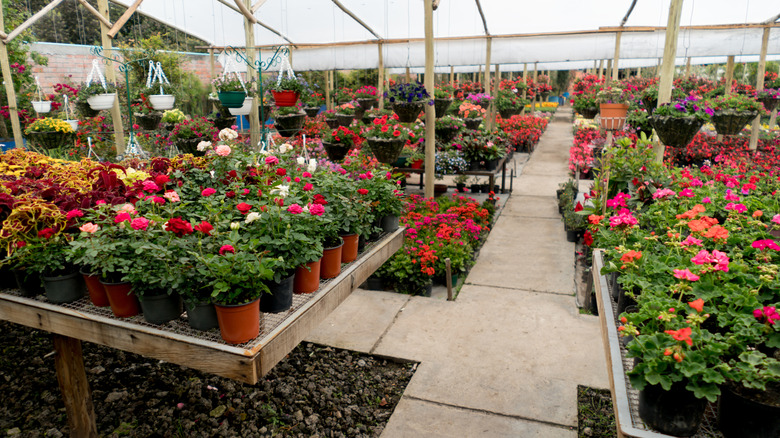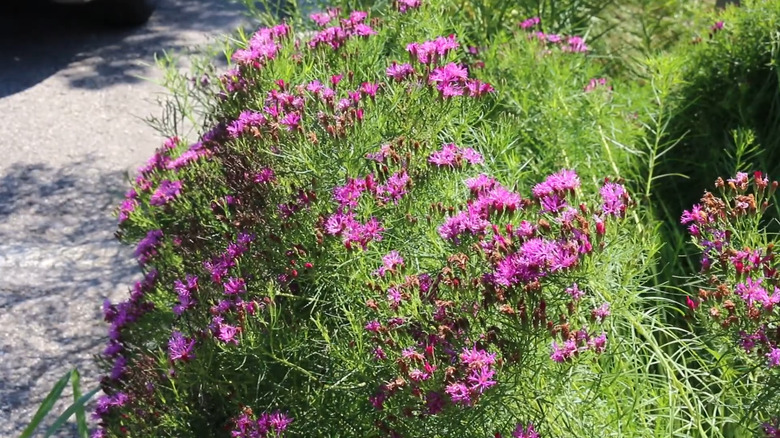It's Official - This Is The 2026 Plant Of The Year
Each year, various gardening organizations announce a plant of the year to arouse interest in different varieties and bring attention to ones that aren't well known. While the plant of the year award from the Garden Club of America isn't as prestigious as the Academy Awards, it's still an important symbol of excellence in gardening circles. This time, the green carpet is being rolled out for their 2026 plant of the year: Vernonia lettermannii 'Iron Butterfly'. Also known as iron butterfly threadleaf ironweed, this is a weedy-sounding wildflower that'll attract beautiful dragonflies to your yard.
Garden awards matter because they help inform people about which plants to include in their yard. With thousands of plant choices available, narrowing your options with award-winning plants can make purchasing and planting decisions so much easier. The Garden Club of America's Plant of the Year award is unique because it focuses on little-known native plants, selected for ecological benefits and ornamental value.
While Vernonia lettermannii 'Iron Butterfly' steps into the spotlight in 2026, it's fun to look back at past winners of this horticulture award. Winners like Chestnut Oak (Quercus montana) in 2025 and Passionflower (Passiflora incarnata) in 2024 show that a wide variety of plants are selected for this distinction based on factors like beauty and resilience. This year, 'Iron Butterfly' takes the crown for being a tough plant and a late-blooming nectar source for migrating hummingbirds.
Explore the reasons to plant Vernonia 'Iron Butterfly' in your garden
'Iron Butterfly' is one of those underrated perennials that'll effortlessly transform patchy garden areas, and it's nice to see it getting the attention it deserves. Taking a closer look at this plant, it's easy to see why it was selected for the 2026 award. Hardy in Zones 4 through 9, 'Iron Butterfly' tolerates both drought and poor soils, producing abundant bright violet flowers on dense mounds. At 24 to 36 inches tall, it's more compact than other varieties of ironweed. This cultivar has fine foliage that looks lovely everywhere from cottage and rock gardens to native plantings and pollinator flower beds.
You'll also find that it can be added to the list of drought-resistant plants that thrive without water once it becomes established. It has a long bloom season, flowering from mid-summer to fall, which is why it's an important nectar source for late-season bees and migrating hummingbirds. Like other members of the Aster family, the vibrant flowers of 'Iron Butterfly' are intricate when you look at them up close, and even though they are only about 1 inch in diameter, there are so many that it looks like a mound of blooms. Plants with deep taproots, like 'Iron Butterfly', are used in dry areas and naturalistic plantings and can help with erosion. Plant it in full sun to light shade, and don't overfertilize it. In the spring, cut it back so it stays bushy and compact before going into bloom in the summer.

